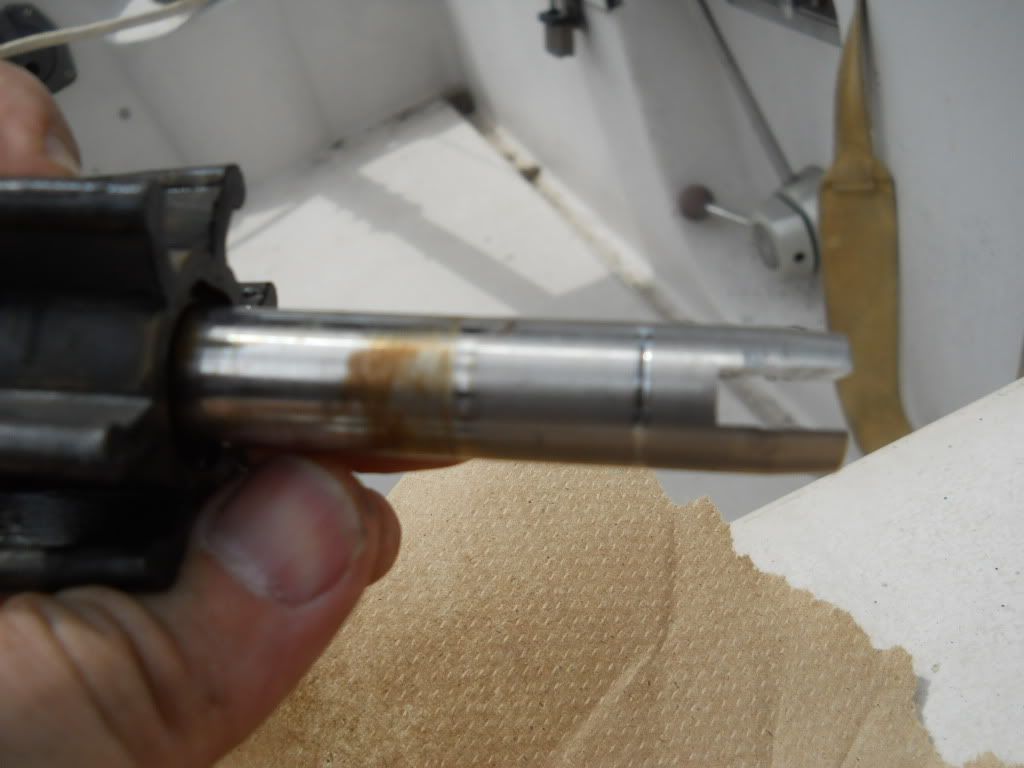 |
| Still looks good to me. |
Time for a little catch-up: A spate of paying, if time-consuming, work has kept me from my main task of "Alchemizing" of late, but in the time I've been able to pry free from my usual Dad duties, I've fixed a number of things on the old plastic boat, which will no doubt prove safer and more effective in the long run than the old, half-assed methods.
 |
| When I launch, I have to bring all my hardware with me |
A delayed launch in May went well, with the exception that prior to it, I "test-fired" the engine, only to have the choke cable come off in my hand. Oopsie. I was able to reeve a salvaged replacement from my stock of Atomic 4 spares in the garage.
 |
| Springtime in Toronto Harbour |
Off we went. The choke wasn't well-adjusted and the engine was hard-starting and prone to stalling. I fixed that once I made it to my marina's slip. A bigger project I had in mind was the "renewal and rationalization" of Valiente's electrical set-up. Like many boats, the batteries were topped by a rat's nest of little clips and nuts...bad and probably hazardous...along with elderly and possibly non-tinned (and therefore more easily corroded) cabling. A somewhat alarming puff of smoke made me think it was time to perhaps replace the main battery switch, along I later determined that was my fault in briefly making a 24 volt battery on the "both" setting...argh...
 |
| 30% less dangerous! |
The keen-eyed will spot a Group 27 "house" battery in the rear of a Group 24 "start" battery. A more logical setup of the cabling and the new Blue Seas main switch means I finally have a "start-house-both" setup. Throw in new 4 ga. properly crimped cables, properly labelled, and the whole setup is easier to understand. All my old cables were black and "auto-grade".
 |
| I'd rather switch than fight |
The new switch fit the old holes, mostly, and my DYMO label maker saw heavy action during the installation. As this boat is shared, and I am aware that my commercial pilot boat partner, Clive, is pretty methodical, I figure clearly labelling everything to the point of obviousness will be appreciated, or at least useful.
 |
| It only reads like I'm shouting |
Yes, this is actually an improvement.
 |
| "Wiring for Dummies" fig. 1n |
Instead of more or less sticking small-gauge wires onto the battery studs with old gum, I made up two busses or terminal blocks/strips for the instruments, 12 VDC sockets, etc.
 |
| Buss, buss, magic buss |
I mounted these in the quarter-berth aft of the nav station for accessibility and visibility (it's better in person!) and carefully crimped and shrink-wrapped all sorts of leads for the various gadgets, including depth sounder (which needed a repair), GPS external power bracket, bilge pump leads, USB socket power supply, and that propane/gasoline sniffer, which is the grey and black box to the right.
 |
| Yep, now "improved" |
I tidied it up with some split loom and cable ties.
 |
| I cut out slots with a Dremel after this. It's mostly out of sight now. |
That little red thing is the sniffer's sensor. Should I ever install propane on this boat, the sniffer also has wiring for a solenoid remote shut-off, which is more than nice to have on a boat with spark plugs.
 |
| Got gas? |
Not pictured are the fixings of the base VHF antenna leads, oil changes, gasket-cutting, engine cable tweaking, the rewiring of the saloon overhead light, various dogging downs and tightenings, and the diagnosis and replacement of a faulty temperature sensor on the engine that was bumming me out. Again, Shelf o' Spares to the rescue. Now I have restored the gauges. They all light up now, as well, as do the running lights. Ain't progress grand? (The masthead light remains dark, alas, but the anchor and steaming function).
I also replaced the impeller. You are supposed to do this every season, but at about 20 hours per year of engine runtime, I let it go three years.
 |
| The power of Christ impels you! |
It was OK, but given that getting at the raw water pump on an Atomic 4 involves much grunting, fine motor skills and mirrors on sticks, I cleaned up the shaft, replaced the impeller and refreshed the grease cup.
 |
| This came clean quickly and there is little "scoring" |
So now the boat is more functional and less hazardous, I feel good turning it over to Clive and family while I get back to Alchemy and the Saga of the Engine Alignment. I think I'll be able to break for an actual sail now and then.





